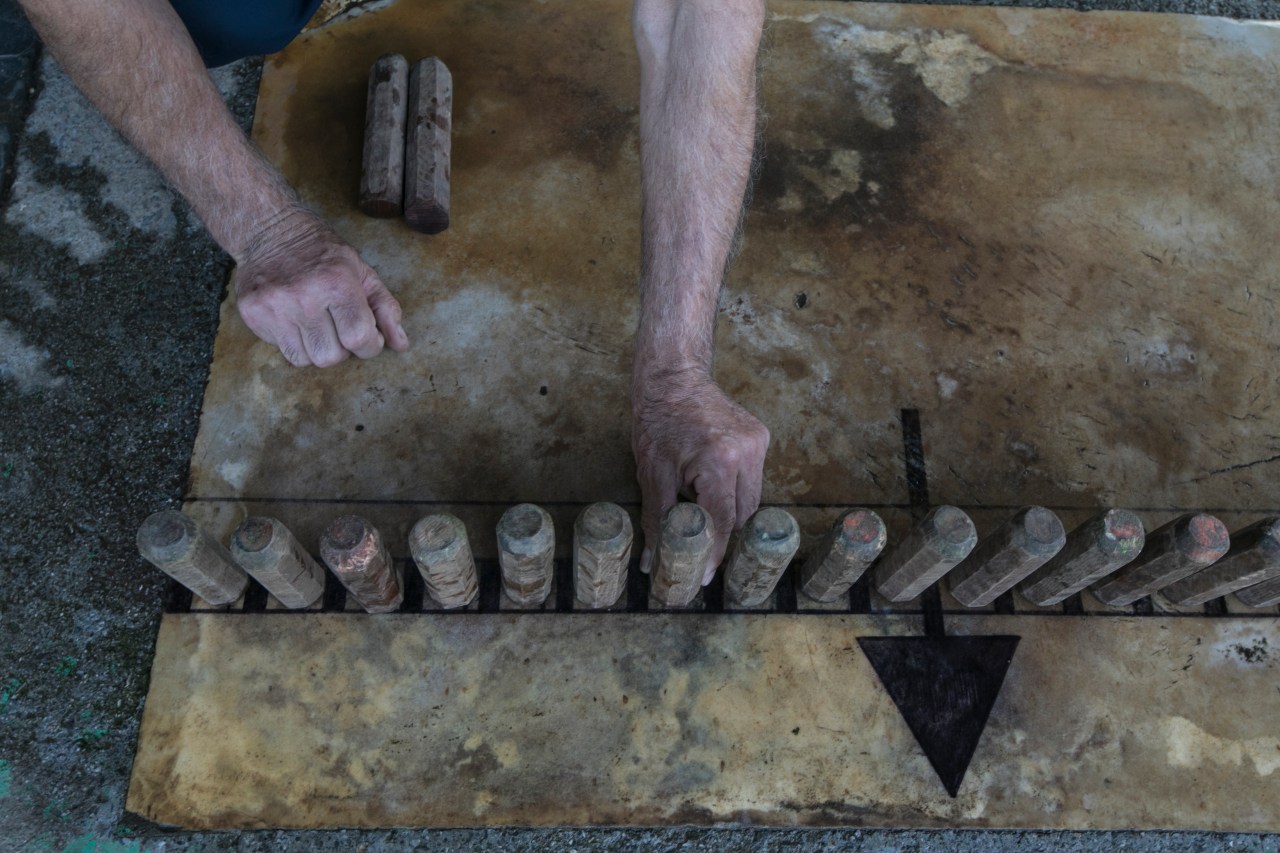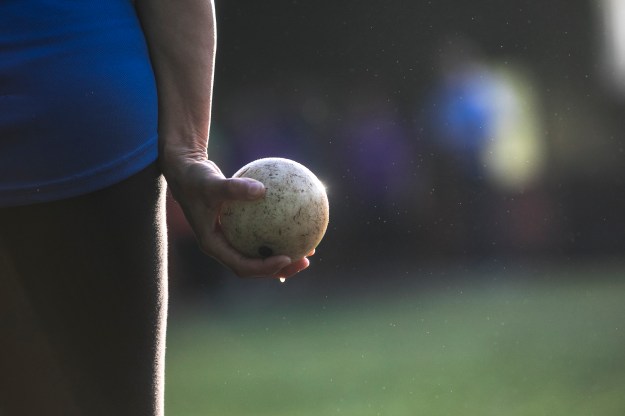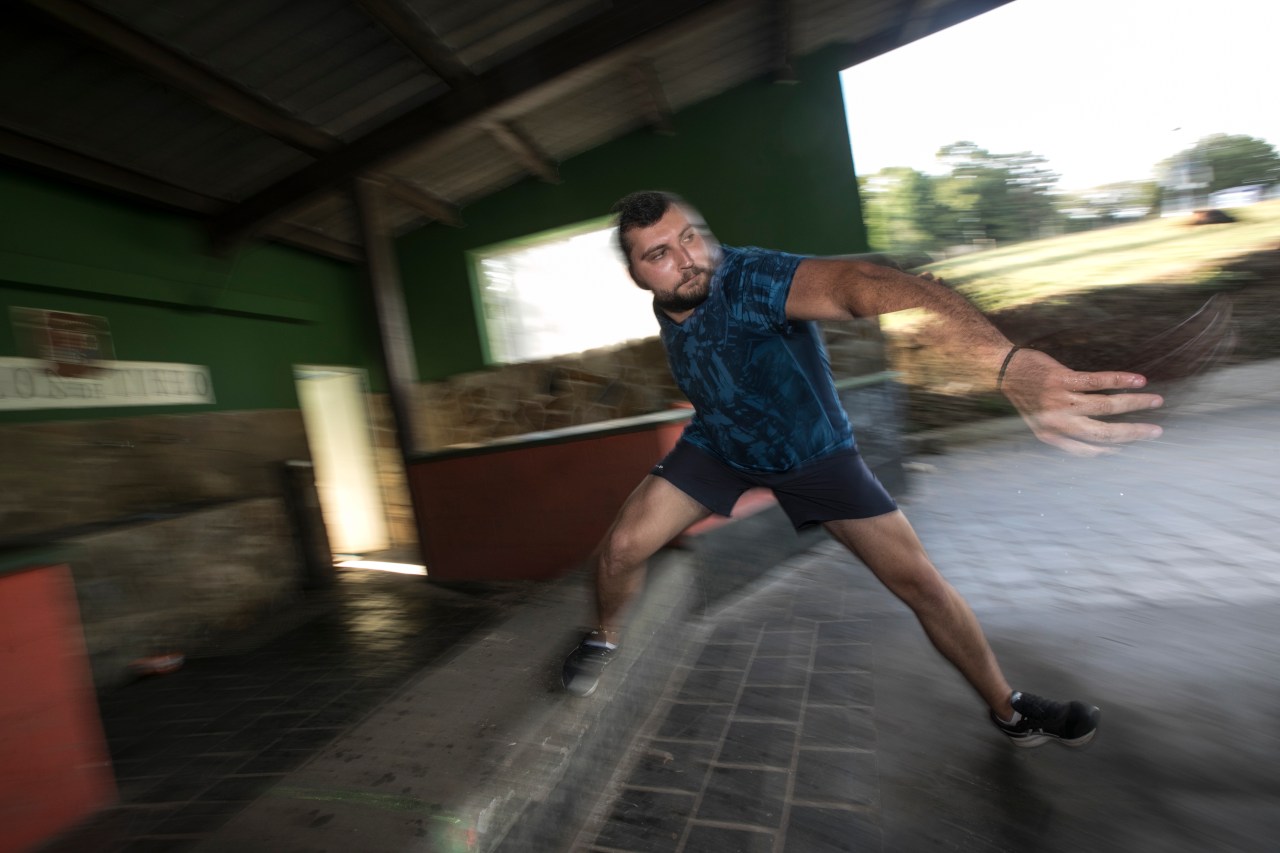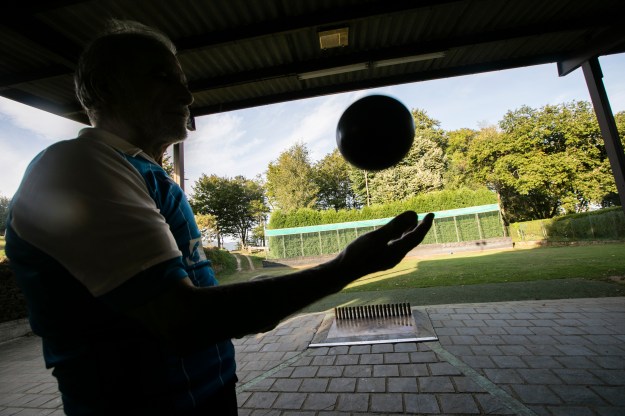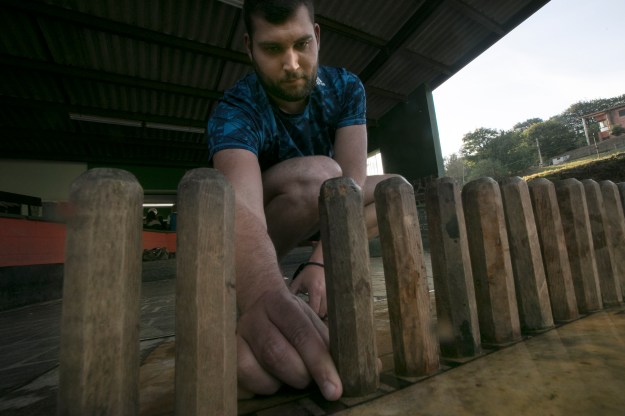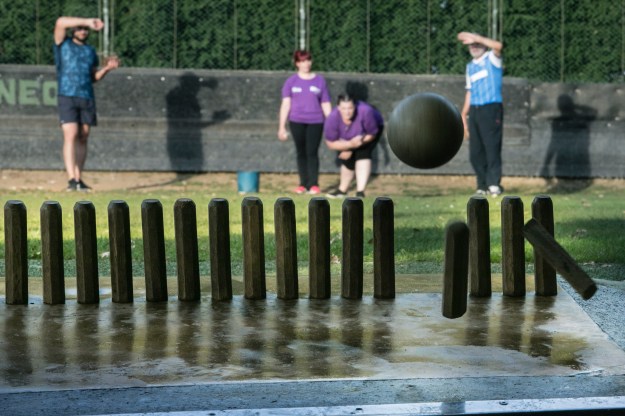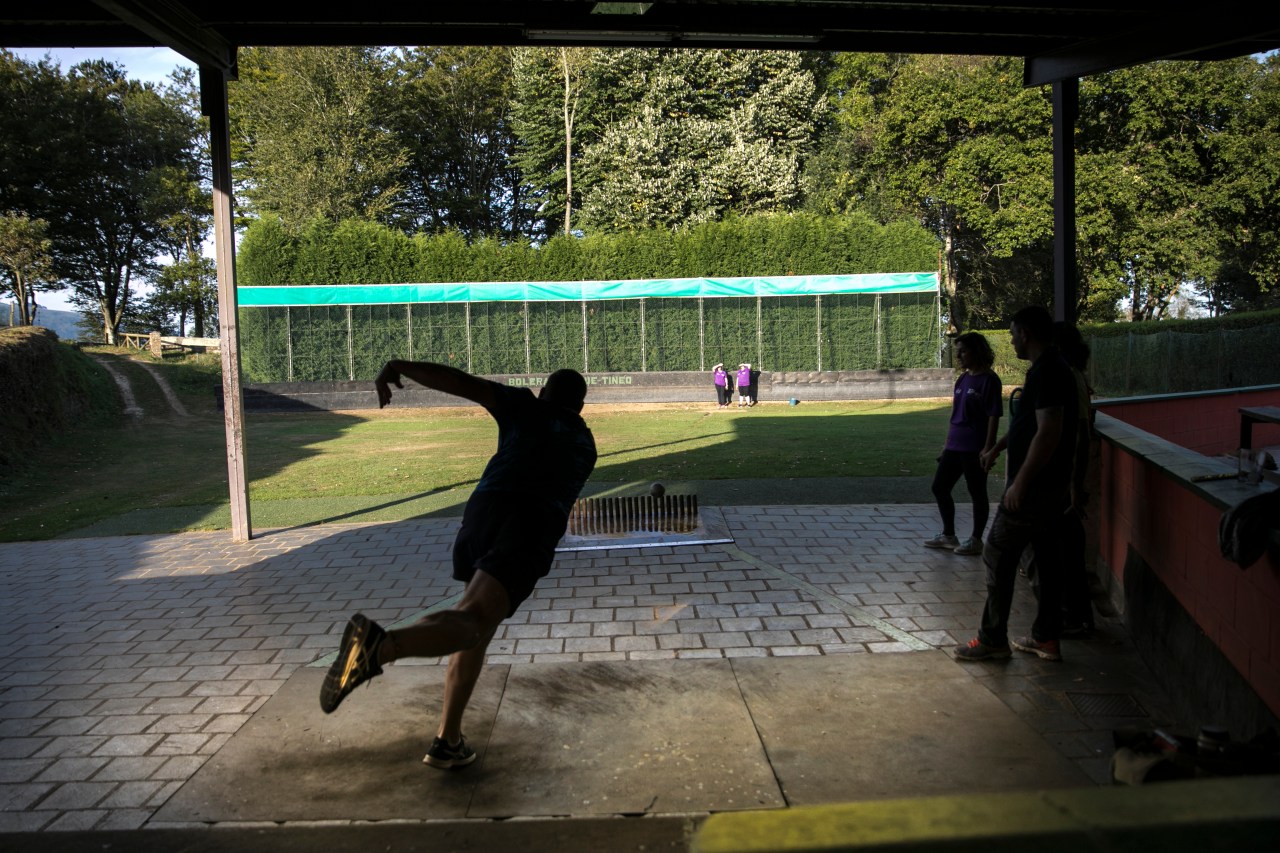When you think of Spanish sports, soccer is probably the first thing that pops into your mind. This hits mostly on the mark, except in the autonomous region of Asturias, where residents embrace the traditional sport of bowling. In one variation, bolo de tineo, nine pins are arranged in a square at one end of a 20-meter alley. From the other end, the bowler throws a small ball at the pins and wins points depending on the number of pins knocked down and where the ball lands.
Bolos is a centuries-old pastime. The first mention of the game dates back to 1495 in the records of Alonso de Quintanilla, the bookkeeper of the Spanish crown: Nuño Bernaldo de Quirós was said to have ruined a coat of arms during a game at the Campo de San Francisco in Oviedo.
In 2003 the municipality of Peñamellera Baja opened the Bowling Museum of Asturias to preserve the history and practice of the sport. In addition to presenting exhibits about the sport and its notable players, the museum houses an alley from 1934, which has become the central playing ground for teams throughout Asturias. This and the Asturian Federation of Bowling, which organizes matches between teams from different cities in the region, help the sport maintain its place in Asturian culture and make it easy for locals and tourists alike to keep the game alive.
